Ignace Pleyel 1863 owned by Charles Albert d’Arnoux – Bertall
Description
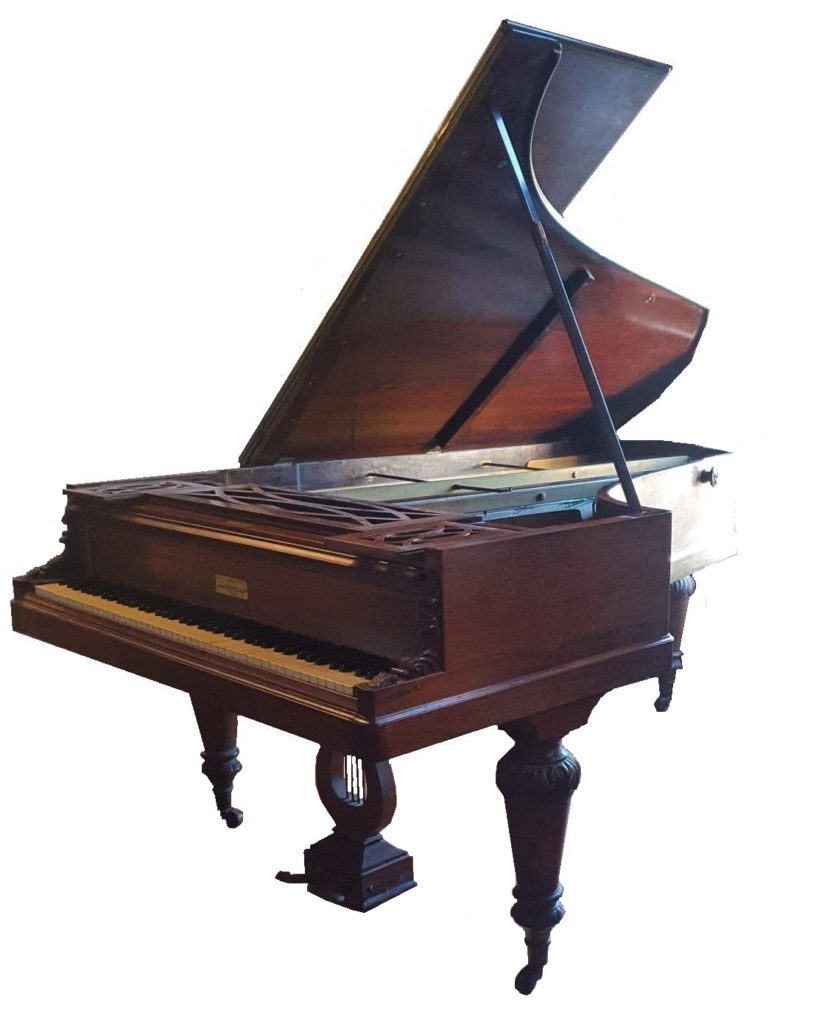
| Date: | 1863 |
| Origin: | Paris |
| Serialnumber: | 35351 |
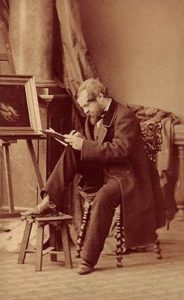
Charles Albert d’Arnoux – Bertall (1820 – 1882) by A. Disdéri
This extraordinary French fortepiano is an important historic instrument in music history, as it comes from the possession of the famous French caricaturist, draftsman and etcher Charles Albert d’Arnoux, or better known as Bertall. He is also known as one of the pioneers of photography. The Pleyel company in Paris was one of the leading piano manufacturers in Europe in the 19th century. Their clients included leading personalities, artists, musicians and composers.
The case of the instrument is made of rosewood with elaborate carvings on the sides near the keyboard. The keyboard is made of ivory and ebony, the hammers are covered with felt and the piano has single dampers. The lyre has two pedals for dampers and una corda. The keyboard has 7 octaves (AAA – a4).
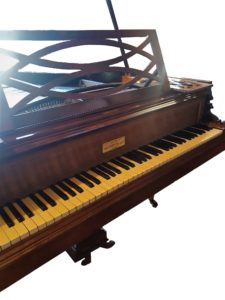
Ignace Pleyel, Paris 1863 owned by Bertall – Eric Feller Collection
The serial number (35351) can be found on the right side of the instrument. The version is the “Petit Patron” model with a total length of 215 cm. The front bears the inscription:
“Ignace Pleyel & Comp.
Paris”
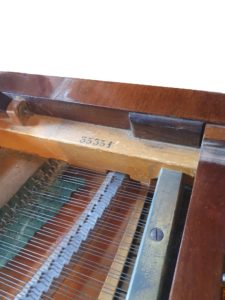
Ignace Pleyel, Paris 1863 owend by Bertall (serial number) – Eric Feller Collection
Inside the piano there are three metal bars. Entries in Pleyel’s original company books indicate that the instrument was completed in 1863 and then sold for 1400 Franc on February 15, 1867 to Charles Albert d’Arnoux – Bertall in Paris. This provenance and the marvellous and beautiful sound make this fortepiano to a special highlight in the collection.
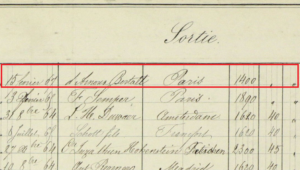
Fortepiano Pleyel 1863 No. 35351 – Eric Feller Collection
Charles Constant Albert Nicolas d’Arnoux de Limoges Saint-Saens (his full birth name) was born on December 18, 1820 in Paris. He was the son of Daniel d’Arnoux de Limoges Saint-Saens (born September 9, 1780 in Grenoble) and his wife Louise-Elisabeth de Limoges (the dates of her life are not yet known), who married in Paris on February 16, 1819. A year later Charles Albert d’Arnoux was born. He was the only child from this marriage. Nothing is known about his childhood so far. Around 1844 he married Albertine Pellapra and together they had 7 children:
- Gabrielle Louise Henriette d’ARNOUX 1845 – 1912
- Georges Noël Adrien d’ARNOUX 1848 – 1917
- Louis Eugene Joseph d’ARNOUX 1859 – 1864
- Daniel Ernest Albert d’ARNOUX 1862 – 1915
- Emilie Albertine d’ARNOUX 1866 – 1949
- Elisabeth Albertine d’ARNOUX 1866 – 1956
- Marie Albertine d’ARNOUX 1866 – 1908
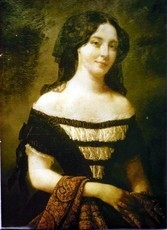
Elisabeth Pellapra de Lolle
On March 18, 1877, his wife Albertine died in Paris at the age of 55. Two years later (on January 12, 1879) Bertall married the sister of his late wife Hortense Pellapra in Paris. They had no children together.
Bertall’s parents intended their son to study at the École Polytechnique, but he devoted himself to painting. He spent the first years in the studio of Michel Martin Drolling (1786 – 1851) and then decided on illustrative drawings and caricatures as his artistic focus.
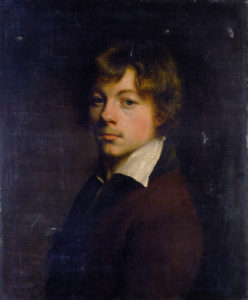
Michel-Martin Drolling, Self-Portrait (1804)
On advice of Honoré de Balzac (1799 – 1850), he only signed his works with Bertall, an anagram of his first name Albert. On February 3, 1875 he was made a Knight of the Legion of Honour. He drew for various magazines and newspapers and illustrated books, including his own texts. He also showed an interest in photography from an early age and from 1855 worked together with the famous photographer Hippolyte Bayard (1801 – 1887). In the early 1860s, both Bayard and Bertall opened a photo studio at Rue de la Madeleine No. 15 in Paris. In 1866 they separated and Bertall opened his own photo studio. There he specialized in portraits. Shaped by his artistic environment, music was also an important point in his life and family. On March 24, 1882, Bertall died in Soyons.
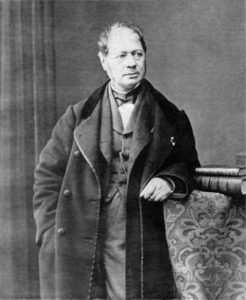
Hippolyte Bayard – Self-Portrait 1863
Publications by Bertall:
- Les Omnibus, pérégrinations burlesques à travers tous chemins, avec Lefix, 1843
- Les Buses-Graves, prospectus publicitaire, 1843 : parodie des Burgraves de Victor Hugo, Tortu Goth (which was also a pseudonym of Bertall)
- Les Guêpes à la Bourse, 1847
- Cahier des charges des chemins de fer, 1847
- Les Enfants d’aujourd’hui, album de caricatures, 1848
- La Revue comique à l’usage des gens sérieux, novembre 1848 – avril 1849
- Les Infortunes de Touche-à-tout, 1861
- Mlle Marie sans-soin, 1867
- M. Hurluberlu et ses déplorables aventures, 1869
- Les Communeux, 1871. Types, caractères, costumes, 1871
- Le Grelot au Salon. Le Salon de 1872 dépeint et dessiné par Bertall, 1872
- La Comédie de notre temps : études au crayon et à la plume. I. La civilité, les habitudes, les mœurs, les coutumes, les manières et les manies de notre époque. II. Les enfants, les jeunes, les mûrs, les vieux. III. La vie hors de chez soi : l’hiver, le printemps, l’été, l’automne, 3 volumes, 1874-1876
- Les Contes de ma mère, recueillis et illustrés par Bertall, 1877
- La Vigne, voyage autour des vins de France : étude physiologique, anecdotique, historique, humoristique et même scientifique, 1878
- Mademoiselle Jacasse, 1879
- Les Plages de France, 1886
- Georges le distrait, 1889
Illustrated books by Bertall:
- Honoré de Balzac : Œuvres complètes, 20 volumes, 1842-1855
- Eugène Briffault : Paris dans l’eau, 1843
- Pierre-Jules Hetzel : Nouvelles et Véritables Aventures de Tom Pouce, 1844
- Collectif : Le Diable à Paris. Paris et les Parisiens. Mœurs et coutumes, caractères et portraits des habitants de Paris, tableau complet de leur vie privée, publique, politique, artistique, littéraire, industrielle, etc., 2 volumes, 1845-1846
- Honoré de Balzac : Petites Misères de la vie conjugale, 1845
- Alexandre Dumas : La Bouillie de la comtesse Berthe, 1845
- Alexandre Dumas : Histoire d’un casse-noisette, 1845
- Paul Féval : Contes de nos pères, 1845
- Maurice Alhoy : Les Bagnes, 1845
- Maurice Alhoy et Louis Lurine : Les Prisons de Paris, 1846
- Octave Feuillet : Vie de Polichinelle et ses nombreuses aventures, 1846
- Léon Gozlan : Aventures du prince Chènevis, 1846
- Émile Souvestre : Le Monde tel qu’il sera, 1846
- Eugène Briffault : Paris à table, 1846
- Jean Anthelme Brillat-Savarin : Physiologie du goût, 1848
- Nicolas Boileau : Œuvres poétiques, 1846
- Bernardin de Saint-Pierre : Paul et Virginie, 1849
- James Fenimore Cooper : Le Dernier des Mohicans, 1849
- Charles Perrault : Contes, 1852
- Georges Bonnefons : Les Hôtels historiques de Paris, 1852
- Hoffmann : Contes fantastiques, 1856
- Jacques Porchat : Contes merveilleux, 1858
- Paul Boiteau : Légendes pour les enfants, 1861
- Comtesse de Ségur : Les Vacances, Les Petites Filles modèles, 1863
- Wilhelm Hauff : L’Auberge du Spessart, contes allemands, 1863
- Arthur de Gravillon : La Malice des choses, 1867
- Edmond Auguste Texier : Le Journal et le journaliste, 1868
- Miguel de Cervantes : Don Quichotte, 1870
- Alphonse Daudet : Les Petits Robinsons des caves ou le siège de Paris, 1872
- Jean Macé, Contes du petit château, 1876
- Paul de Kock : La Laitière de Montfermeil. Le Muletier, 1878
- Arthur de Rothschild : Histoire de la poste aux lettres et du timbre-poste depuis leurs origines jusqu’à nos jours, 1880
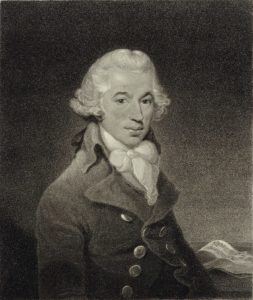
Ignaz Josef Pleyel (1793) after Thomas Hardy
The Pleyel company was founded in 1807 by the Austrian composer and music publisher Ignaz Josef Pleyel (born in Ruppersthal 1757 – died 1831 in Paris) under the name Ignace Pleyel & Comp. Before that, in 1797, he founded a music publishing company in Paris and established himself in the musical life of the French metropolis. In 1802 he designed his first piano (the patent application was made in 1807). Together with the instrument maker Charles Lemme, he founds the piano factory. With the support of various patrons, he was able to establish his business.
He was soon joined by his son (Joseph-Étienne-) Camille Pleyel (born 1788 in Strasbourg – died 1855 in Paris), who became a full partner in 1815. Camille Pleyel studied composition with his father and piano with Johann Ladislaus Dussek (born 1760 in Čáslav / Central Bohemia – died 1812 in Saint-Germain-en-Laye). He spent most of his youth in London but returned to Paris in 1824 to take charge of the firm that year.
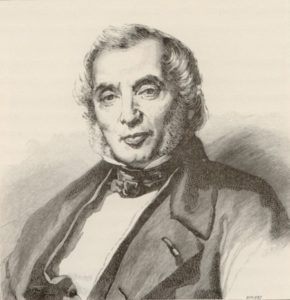
Camille Pleyel c. 1840
In the 1820s, the Pleyel factory was located in Saint-Denis. During this time, about twenty workers made about fifty pianos a year. At its first exhibition in Paris in 1827, the firm won a gold medal, awarded for its inventions and for a three-string grand piano that was ranked on a par with the best English pianos. At the Paris Exhibitions in 1839 and 1844 the firm triumphed again by winning more gold medals. The acclaim was an excellent spur to business and by 1844 production had increased to 900 pianos a year.
Camille Pleyel established the first Salon/Salle Pleyel and had many friendly relationships with the most famous people of musical life of the time. Great composers such as Frédéric Chopin (1810 – 1849) or Franz Liszt (1811 – 1886) played instruments made by Pleyel. The Salle Pleyel, one of the earliest concert halls in France and was built on Rue Rochechouart in the late 1820s. Chopin played his last concert there on February 16, 1848.
After Camille’s death in 1855, his son-in-law Auguste Wolff (1821 – 1887) took over the management of the company. He changed the name to Pleyel, Wolff & Cie. and continued the success of the company.
His son-in-law Gustave Lyon (1857 – 1936), who took over the company in 1887, continued the success. In 1971, ten years after the merger of Pleyel with Érard and Gaveau, Schimmel from Braunschweig acquired all three companies.
Other surviving instruments by Ignace Pleyel & Comp. can be found in many museums and private collections worldwide.
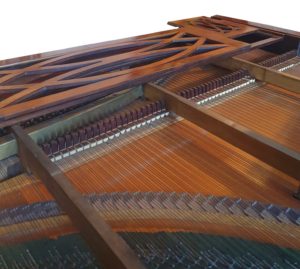
Ignace Pleyel, Paris 1863 owend by Bertall (4) – Eric Feller Collection
References:
- René Beaupain: Chronologie des pianos de la maison Pleyel. Éditions L’Harmattan, Paris 2000
- Henri Beraldi, Les Graveurs du XIXe siècle, vol. II, 1885
- Jean-Jacques Eigeldinger: Chopin et Pleyel. Fayard, Paris 2010
- John Grand-Carteret: Les moeurs et la caricature en France. Paris 1888
- Jean-Jacques Trinques: Le piano Pleyel d’un millénaire à l’autre. Éditions L’Harmattan, Paris 2003
- Arnaud Marion: Pleyel. Une histoire tournée vers l’avenir. Éditions de la Martinière, Paris 2005
- Arnaud Marion: La Salle Pleyel: Lieu de Modernité. Éditions de la Martinière, Paris 2006
- Arnaud Marion: La Salle Pleyel. In: Connaissance des Arts, Hors série. 5. November 2006
- Daniel Mason. Der Klavierstimmer Ihrer Majestät. Roman. Blessing 2003
- J. Rousseau, Histoire d’une résurrection: pianissime Pleyel. In: Classica-Répertoire. September 2007, S. 46–47
- Jean Jude: Pleyel 1757–1857. La passion d’un siècle. Imprimerie du Centre Loire, Fondettes 2008
- Gustave Vapereau, Dictionnaire universel des contemporains, vol. 1, 1858
© Eric Feller – Early Keyboard Collection – December 2022
| Length: | 215 cm |
| Width: | 133 cm |
| Height: | 33 cm |
| Circumference: | 7 octaves (AAA – a4) |
| Mechanics: | English Action (Stoßzungenmechanik) |
| Pedals: | 2 Pedals (dampers & una corda) |
| Signature: |
„Ignace Pleyel & Comp. Paris” |

